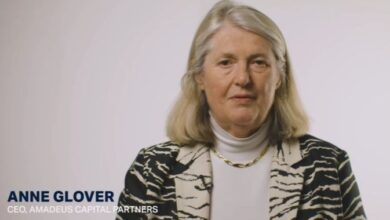The Case Against Charismatic Leadership

Charismatic leaders dominate our imagination. From Steve Jobs to Winston Churchill, we celebrate leaders whose force of personality seems to bend reality to their will. Business schools teach case studies of visionary CEOs, and leadership programs often focus on developing executive presence and persuasive communication. But what if our obsession with charismatic leadership is actually undermining organizational effectiveness?
The Dark Side of Magnetic Personalities
Charismatic leaders create a dangerous dependency within organizations. When success becomes synonymous with one person’s vision and energy, the entire system becomes fragile. Teams learn to wait for direction rather than taking initiative. Decision-making bottlenecks form around the charismatic leader, slowing organizational response times and reducing agility.
Perhaps more troubling is the way charisma can mask incompetence or even malicious intent. History is littered with charismatic leaders who led their organizations—and nations—to disaster. The ability to inspire and persuade doesn’t correlate with sound judgment, ethical behavior, or strategic thinking. In fact, excessive charisma can become a substitute for substance, allowing leaders to avoid accountability through the sheer force of their personality.
The Quiet Effectiveness of System Builders
Some of the most successful organizations have been led not by charismatic visionaries, but by what Jim Collins calls “Level 5 leaders“—individuals who combine fierce resolve with personal humility. These leaders focus on building systems, developing people, and creating sustainable processes rather than building personal brands.
Consider Ray Kroc of McDonald’s. While not particularly charismatic, he built systems that could operate consistently across thousands of locations without requiring his personal presence. Compare this to many startup founders whose companies struggle to scale beyond their personal ability to inspire and direct every decision.
The Innovation Problem
Charismatic leaders often stifle innovation through the sheer force of their conviction. When a leader’s ideas carry disproportionate weight due to their personal magnetism, dissenting voices get marginalized. Teams begin to practice what psychologists call “anticipatory compliance”—adjusting their ideas to match what they believe the charismatic leader wants to hear.
This creates an echo chamber effect where bad ideas get amplified and good alternatives never surface. Organizations led by charismatic leaders often experience innovation droughts after the leader’s departure because the systems for generating and evaluating ideas never developed independently.
Building Anti-Fragile Organizations
The most resilient organizations are those that can thrive regardless of who’s in charge. This requires leaders who prioritize system building over personal brand building. Instead of making themselves indispensable, they work to make themselves dispensable by creating robust processes, developing strong teams, and distributing decision-making authority.
These leaders focus on asking better questions rather than providing all the answers. They create psychological safety where team members can challenge ideas—including the leader’s ideas—without fear of retribution. They measure success not by their personal influence, but by the organization’s ability to perform well in their absence.
The Communication Trap
Many leadership programs emphasize communication skills and executive presence, often conflating these with charisma. While clear communication is essential, the focus on persuasive speaking can lead leaders to prioritize form over substance. The most effective leaders often communicate through questions rather than declarations, through listening rather than talking, and through creating space for others to contribute rather than dominating conversations.
Developing Others vs. Developing Followers
Charismatic leaders tend to create followers—people who depend on the leader’s vision and direction. System builders create leaders—people who can think independently, make decisions autonomously, and contribute to the organization’s success regardless of who’s in charge.
This distinction has profound implications for succession planning and organizational sustainability. Organizations built around charismatic leaders often struggle with leadership transitions, while those built on systems and distributed leadership can maintain effectiveness through personnel changes.
The Ego Challenge
Perhaps the biggest obstacle to moving away from charismatic leadership is ego. Many leaders are attracted to leadership roles partly because they enjoy the attention, admiration, and sense of importance that comes with being seen as charismatic. Admitting that charisma might be counterproductive requires a level of self-awareness and humility that’s uncommon in executive ranks.
An effective leadership program must address this psychological dimension directly. They need to help aspiring leaders find satisfaction in others’ success rather than personal recognition, and to measure impact through organizational outcomes rather than personal influence.
Metrics That Matter
Organizations serious about moving beyond charismatic leadership need to develop new metrics. Instead of measuring leader approval ratings or communication effectiveness, they should track metrics like:
-
Decision-making speed at various organizational levels
-
Innovation rates from different parts of the organization
-
Performance variance when key leaders are absent
-
Development rates of emerging leaders
-
Employee initiative and autonomous problem-solving
The Servant Leadership Alternative
The alternative to charismatic leadership isn’t weak leadership—it’s servant leadership. Servant leaders focus on removing obstacles for their teams rather than creating dependency. They develop others rather than showcasing themselves. They build trust through consistency and competence rather than charm and charisma.
This approach requires different skills than those typically emphasized in leadership development. Instead of learning to command attention, leaders need to learn to direct attention toward problems and opportunities. Instead of learning to persuade, they need to learn to facilitate group decision-making processes.
Practical Steps Forward
Moving away from charismatic leadership requires intentional changes in how we select, develop, and evaluate leaders. Organizations should look for candidates who demonstrate systems thinking, collaborative problem-solving, and a track record of developing others. Leadership programs should emphasize facilitation skills over presentation skills, question-asking over answer-providing, and long-term system building over short-term inspiration.
The goal isn’t to eliminate personality or passion from leadership, but to subordinate these qualities to the higher purpose of building effective, sustainable organizations. In an increasingly complex and fast-changing world, organizations can’t afford to depend on the rare combination of charisma and competence in a single individual. They need leadership approaches that can scale, adapt, and persist regardless of personnel changes.
The case against charismatic leadership isn’t a case for boring leadership—it’s a case for sustainable, effective, and ultimately more impactful leadership.



